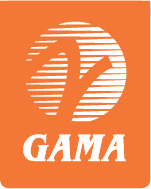|
GAMA Responds to White House Air Traffic Control Privatization Principles
Washington, DC – The General Aviation Manufacturers Association (GAMA) today issued the following statement in response to President Trump’s air traffic control privatization principles:
The United States (U.S.) Federal Aviation Administration (FAA) air traffic control system is the safest, most efficient, largest, technically advanced and most complex in the world. Jobs and continuing investment in the U.S. aviation system depend on a robust, stable and predictable climate for all users. We should not delay or prevent the system’s progress or the country’s growth for a risky transition to a new privatized entity for which only untested assertions about rewards or results can be made. Removing the U.S. air traffic control system from the FAA will create negative impacts for general aviation, rural and small communities, global leadership in air traffic control modernization and ongoing regulatory reform efforts.
Though the president outlines in his principles that over 50 countries have made a successful transition over the last 20 years, none have been close in scope or size to the United States system. Government Accountability Office research has shown that the average time for a transition of an air traffic control system to a private entity in other countries has been five-to-seven years. A transition in the U.S. would likely take as much, if not more time, due to its size and complexity. Additionally, research shows these transitions can create financial risk to the user community and the taxpayers. With the president’s principles outlining that the new entity will receive all current government assets at no cost, payment for environmental liabilities associated with the asset transfer and spectrum use free of charge, it seems the federal government will need to subsidize this private entity. This entity will then be allowed to compete against private sector companies that do not receive such support.
The U.S. Congress, working with stakeholders and FAA, has implemented equitable solutions to challenges like rural and small community service, fair access for all aviation users, environmental impacts of noise and traffic, infrastructure and funding mechanisms. The FAA has also managed the safe integration of new technologies into the National Airspace System because it is chartered to serve a broader public purpose. There is no guarantee that this new entity could run the safest, busiest and most complex airspace in the world, while simultaneously increasing the pace and impact of modernization and assuring the American people that it will, first and foremost, serve the public interest.
Transitioning the current air traffic system to a new entity could delay progress on air traffic modernization under the FAA’s NextGen program, which is yielding benefits for the U.S. air transportation system, economy and American jobs. Instead of delaying such progress, we could continue its advancement while also making targeted improvements to ensure more financial flexibility for the FAA as well as better tools to manage major capital programs.
GAMA today also joined a host of general aviation associations in sending a letter to President Trump in response to the Administration’s principles on air traffic control privatization, including user fees. The letter states, “Today, the U.S. air traffic control system is the best in the world, moving more aircraft, more safely and efficiently, than any other country. Working with Congress and the FAA, aviation stakeholders have been able to ensure that our system operates for the public benefit, providing access for all stakeholders to airports, heliports and airspace, and encouraging competition and innovation.”
Read the letter.
For additional information, please contact Sarah McCann, GAMA Director of Communications, at +1 (202) 637-1375 or smccann@gama.aero.
GAMA is an international trade association representing over 100 of the world’s leading manufacturers of general aviation airplanes and rotorcraft, engines, avionics, components and related services. GAMA’s members also operate repair stations, fixed based operations, pilot and maintenance training facilities and manage fleets of aircraft. For more information, visit GAMA’s website at www.GAMA.aero.
|

